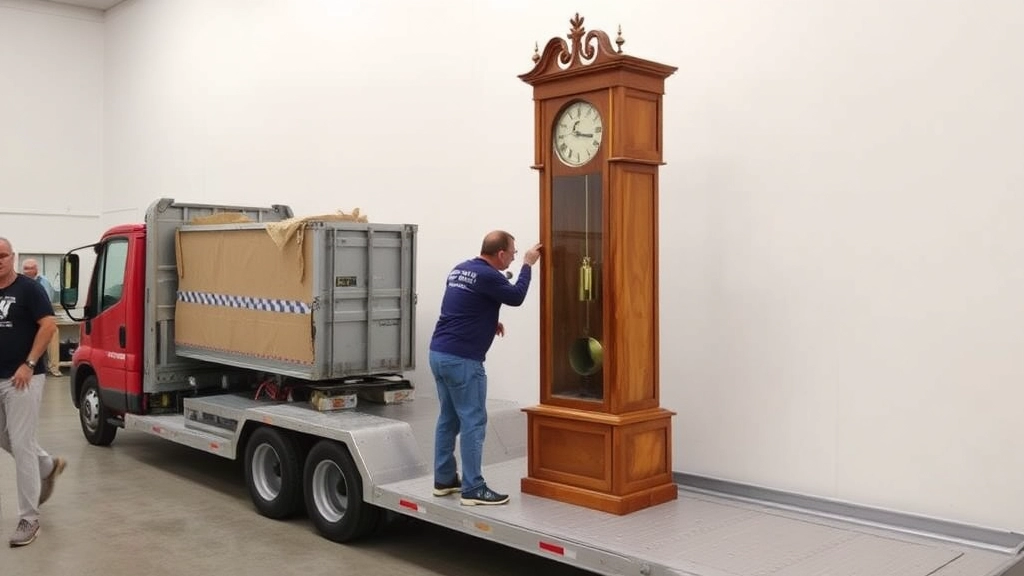How to Move an Antique Clock – Tips from MantelClock Studio
Moving a desk clock is never easy. These precious clocks need to be handled with care so that they are not damaged in transit. Whether it’s a family heirloom or a precious antique, it’s vital to ensure that the clock is safe during transportation. At Mantel Clockworks, we’ve summarized the key steps and expert tips for safely and efficiently moving a clock.
Can I lay down a desk clock for transportation?
It is not recommended to transport a desk clock lying flat. Placing a clock horizontally puts undue stress on its delicate panels, glass elements and internal mechanics. In addition, the movement and other delicate parts may be damaged, which could affect the clock’s functionality or value. To maintain the integrity of your clock, it’s best to place it in an upright position whenever possible.
How to Move an Old Clock
While there is no set way to move an old desk clock, there are some standard practices that can simplify the process and increase safety. Choosing the right method of transportation depends on your specific situation and the distance the clock is being transported. The two most common methods are:
- Truck transportation
Renting a truck is a common option for transporting antique clocks. Box trucks or pickups with loading and unloading ramps are ideal, as the ramps help lift the clocks safely into the vehicle. With proper filling and securing techniques, a truck can ensure that your antique clock is safely transported to its destination. - Air Transportation
For long-distance or international shipments, air transportation may be the safest option. This method minimizes risks, such as bumpy roads, that could affect the pendulum or the clock’s weight-driven mechanism. Although more costly, air transportation ensures the integrity of the antique desk clock and provides added peace of mind.
Basic Steps to Prepare an Antique Desk Clock for Transportation
Before moving your antique clock, the most fragile parts must be disassembled and secured. Follow these steps to protect your clock during transportation:
- Remove the glass panel
- Wear soft cotton gloves to prevent scratching or soiling.
- Carefully remove the front and side glass panels.
- Wrap each panel with a protective material such as bubble wrap or cardboard for added cushioning.
- Removing the Pendulum Weights
- Reach inside the clock and gently remove each weight.
- Wrap each weight in bubble wrap or soft wrapping paper to prevent scratches or dents.
- Label the weights to ensure proper assembly at your destination.
- Removing the Pendulum
- Gently remove the pendulum from the pendulum guide from the top of the clock.
- Wrap the pendulum in bubble wrap, blanket or padding material. Secure with tape or rubber bands to prevent the pendulum from moving.
- Removing the Chime
- Secure the chime lever and hammers with foam or cardboard to prevent noise or damage in transit.
- If possible, remove the bell head and pack it separately. Use a protective layer to cushion this fragile component.
Transporting your clock safely
After all removable parts have been properly packaged, ensure that the main structure of the clock is padded and secured during transportation. Use moving blankets, foam padding, or custom crates to protect the body of the clock. Secure the bell in an upright position to prevent it from tipping or moving during transportation.
Final Step: Reassembly and Setup
Once the clock has been safely transported to its new location, carefully reassemble the components in reverse order.
- Reinstall the clock hammers, pendulum and glass panels.
- Secure the clock in its new location, making sure it is level and stable.
- If your clock has customized wiring or unique power requirements, consult a qualified professional for setup.
Summarizing
Moving antique clocks is a delicate process, but with preparation and care, it can be done safely and efficiently. At MantelClock Studios, we understand the value of these timeless pieces, whether they are precious antiques or heirlooms. Be sure to prioritize protective measures and proper handling to ensure that your antique clock remains intact in transit.
By taking these steps, your precious timepiece will arrive at its new home in perfect condition to continue telling time for future generations.
-
Elegant Black Mantel Clock for Living Room – Silent & Stylish
Original price was: $180.00.$170.00Current price is: $170.00.





